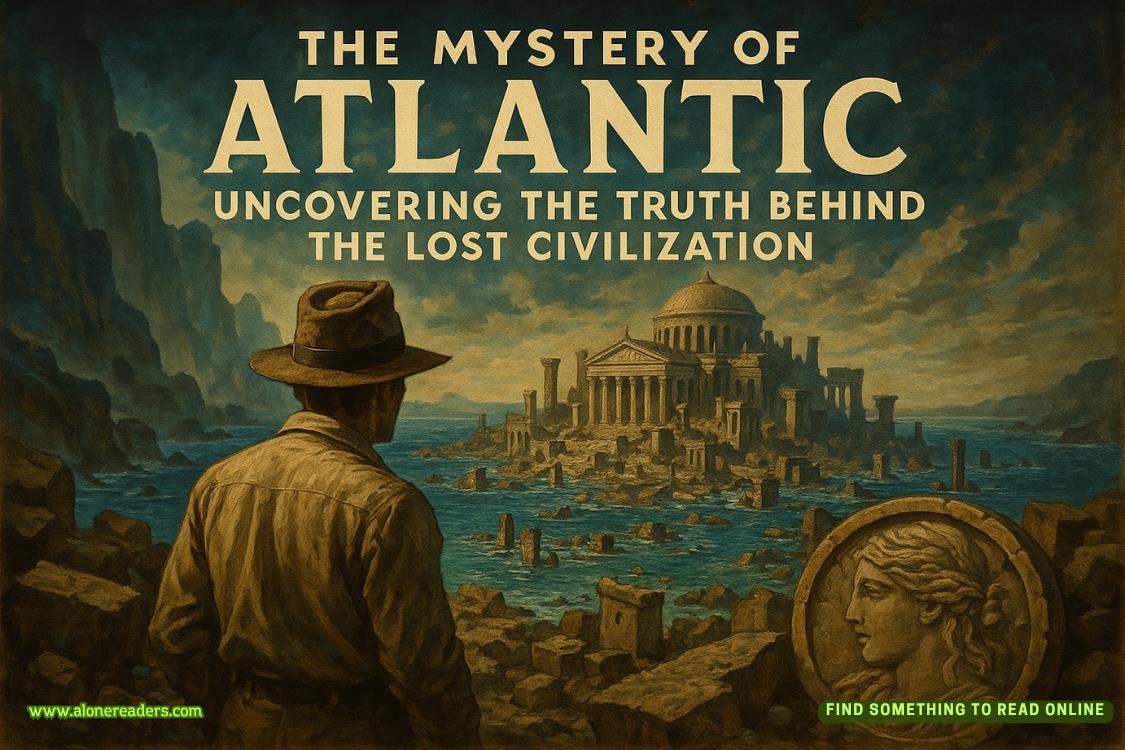Page 27 of Finding Love in the Clouds
This journey is not just about the destination but the sights, sounds, and smells that define this beautiful part of Italy. Enjoy theride, and get ready to step back in time when we arrive at the ancient city of Pompeii.”
Fernando stood and pushed the large bus window open so he and Sophie could enjoy the fresh breeze. They were sitting at the back of the bus all by themselves, so they didn’t need to worry about bothering anyone with the rush of warm air. Lifting the armrest separating their seats, he offered for Sophie to turn and rest against him so she could see out the window without getting a stiff neck.
They sat this way, enjoying the view of the countryside flashing by for the remainder of the trip. It was relaxing. No innuendo or expectation. Just two friends enjoying an experience together. As Fernando gently held Sophie, he imagined what it would be like to do this on a regular basis. Not as friends but as… more. His brother’s words were playing and replaying in his head. He was enjoying this. He would love to have more of it, but this wasn’t real life; this was a vacation. How would things play out when the stress of the job got involved? Would Sophie consider it if he asked for more than a fake relationship? Gabe said she was already in love with him, but would she be willing to take a step forward, for real? Was it better to let things stay the way they were so that he didn’t risk losing the one person who was single-handedly keeping his world together?
Sweeping the doubts that plagued his mind away, he pressed a gentle kiss to the top of her head. For now, he would be present in the moment and see how things played out. If they were meant to be more, he needed a sign. Otherwise, he was going to be the chicken Julio accused him of being and keep things status quo. Sophie was too precious to him to risk losing.
Chapter Twenty-Five
Fernando and Sophie stepped off the bus, stretching their cramped limbs as they breathed in the fresh air of Pompeii. The sun was already high in the sky, casting warm rays over the ancient ruins that sprawled before them. Their guide, Marco, a lively Italian in his late twenties with a wide smile and a passion for history, gathered the group around.
“Welcome to Pompeii!” Marco exclaimed, his voice echoing with enthusiasm. “I have the pleasure of being your guide today. I love all things old and Pompeiian, having studied these ruins for the past ten years. As we stand here amidst the ruins, it’s hard to imagine that Pompeii was once a bustling city and one of the most important ports in the Gulf of Naples,” Marco began, his voice carrying the weight of history. “Today, you’ll get a glimpse into a city that dates back to the 6th or 7th century BC. Originally settled by the Oscans, Pompeii later came under the control of the Greeks, Etruscans, and finally, the Romans. By the time of the eruption, Pompeii was a thriving resort city for Rome’s elite, boasting elegant villas, lush gardens, and bustling marketplaces. In AD 79, Mount Vesuvius erupted with unimaginableforce, sending a massive cloud of volcanic debris, ash, and pumice into the sky. Within hours, the city was buried under a nine-foot thick layer of ash, preserving it in a tragic snapshot of time. The residents were caught off guard, and most perished where they stood from clouds of hot gas reaching temps of 1000 degrees Fahrenheit, called pyroclastic flows, that swept over the city. This catastrophic event, while devastating, has given us an incredible window into ancient Roman life, revealing the intricate details of daily existence in a way that no other site can.”
Marco continued, “The city lay hidden for nearly 1,700 years until its rediscovery in 1748. Since then, extensive archaeological excavations have uncovered remarkably preserved buildings, frescoes, and artifacts. These excavations have provided invaluable insights into the daily lives, culture, and social structures of ancient Rome. As we walk through the streets of the Greco-Roman city, you’ll see homes, shops, temples, and public baths that offer a unique and tangible connection to the past. The work here continues to this day, with archaeologists like me uncovering new discoveries that add depth to our understanding of this once-vibrant city.”
As they began their tour, the cobblestone streets of Pompeii crunched underfoot, giving Sophie goosebumps as she thought about the people who traversed these very streets and occupied the ruins lining their path, each telling a story of a bygone era. She marveled at the intricate mosaics that adorned the floors, their colors still vibrant after nearly two millennia.
Marco led them into a well-preserved villa, its walls adorned with frescoes. “This is the House of the Tragic Poet,” Marco announced, gesturing towards the well-preserved remains. “It’s a typical example of a Roman domus, or townhouse, and although it’s relatively modest in size, it’s renowned for its beautiful mosaics and frescoes. Notice thecolors,” Marco said, gesturing to the vibrant reds and blues. “These frescoes were painted using a technique called fresco secco, where pigments were applied to dry plaster. This method preserved the colors remarkably well.” As they entered the atrium, Marco pointed to the floor. “These mosaics were a status symbol,” Marco explained. “The wealthier the household, the more elaborate the designs. Look at this one here,” he pointed to a mosaic depicting a fierce dog, with the words ‘Cave Canem’—‘Beware of the Dog.’ “Even back then, they had their own version of a ‘Beware of Dog’ sign!” The group laughed as they continued on.
He guided them into the tablinum, the main reception room. “This room would have been used for business meetings and greeting guests. The frescoes you see depict scenes from Greek mythology, adding a touch of sophistication and culture to the home.”
Moving into the triclinium, or dining room, Marco explained, “The triclinium was used for formal dining. The Romans would recline on couches arranged around a central table, enjoying elaborate meals. You can still see traces of the decorative frescoes that would have surrounded diners as they ate.”
Next, Marco led them to the peristyle garden. “This courtyard provided a private outdoor space for the family. It’s surrounded by columns and often had a central fountain or pool, making it a peaceful retreat from the bustle of daily life.”
They continued to the kitchen, where Marco highlighted the hearth and remnants of cooking utensils. “The kitchen was relatively small and functional, as most Roman houses didn’t have extensive cooking facilities. The focus was on simple, practical meals, with larger banquets likely prepared elsewhere.”
Exiting the villa, they moved towards the thermopolium, an ancient bar or snack shop. There was little left of the ruins beside a largearea that was easily imagined as a stone countertop dissected by what would have been a space for a door. The upper walls were missing, and there was no room for patrons to be inside. Marco explained, “These were the fast-food joints of Pompeii. Residents could grab a quick meal or drink here. You can see the large jars set into the counter, which would have held hot food. The counters were often beautifully decorated with frescoes, reflecting the importance of these establishments in daily life.”
“Now, close your eyes and imagine the scent of freshly baked bread wafting in the air,” Marco instructed, stopping a little further down the main street. These are ruins of an ancient bakery.” Entering through the imaginary door, he pointed at a large brick structure. “This was the oven. Archeologists found 80 loaves of bread that were baking at the time of the eruption, encased in ash and perfectly preserved for almost two thousand years. This gives us insight into the demand for purchased bread being very high at the time.” He pointed to a large vessel shaped like a massive vase with a wide mouth and base but a skinny neck. “Here are mills where donkeys would be used to grind the grain. You may also be interested to learn that dough was not prepared by hand but was made by a bread-making machine using large paddles to mix the dough. Only the forming and stamping of the bakery logo or mark would have been done by hand. Pompeii had thirty-five bakeries, each supplying the needs of their own local area. They were located on the main streets and in the northern part of the city where they would have easiest access to grain supply.”
As they moved on, the group reached the Forum, the heart of Pompeii. Marco paused, allowing them to take in the grandeur of the space. Tall columns framed the area, casting long shadows on the ground.
“Here we are at the Forum,” Marco announced, spreading his arms wide. “This was the hub of Pompeii, where people gathered to discuss politics, shop at the market, or simply socialize. Imagine the hustle and bustle, the sounds of merchants calling out their wares, the clinking of coins, the chatter of conversations.”
Fernando closed his eyes for a moment, picturing the scene Marco described. The lively market, the colorful stalls filled with goods, and the aroma of fresh produce and spices wafting through the air. When he opened his eyes, he could almost see the Pompeiians of old going about their daily lives.
They continued their tour, making their way to the amphitheater. The structure, remarkably intact, loomed before them, its tiered seating capable of holding thousands of spectators. Marco led them inside.
“This amphitheater is one of the oldest surviving Roman amphitheaters,” Marco explained. “It could hold around 20,000 people and was used for gladiatorial games, public spectacles, and other entertainment. The acoustics here are incredible—stand in the center, and you’ll see what I mean.”
Sophie stepped into the center of the amphitheater and shouted, “Hello,” her voice ringing out as she spoke. The sound carried effortlessly, filling the space and returning to her ears with a surprising clarity. She smiled, imagining the roars of the crowd and the clash of gladiators in this very spot. There was no comparison to the Colosseum in Rome, as the architecture was completely different even though they both held gladiator sports and other entertainments.
As the group left the imposing amphitheater behind, Marco led them towards the ancient bathhouses. He gestured towards the impressive structure ahead, its weathered walls bearing silent witness to centuries of history. “Welcome to the Terme Stabiane,” Marco announced, his voice echoing against the ancient stone. “Here, in theheart of Pompeii, lies another of the city’s most important social and cultural hubs—the public baths.”
As they entered the sprawling complex, Marco explained, “In Pompeii, bathing was not merely a daily chore but a communal ritual. The baths were not only places for physical cleansing but also socializing, exercise, and relaxation. The city boasted several public bathhouses, or thermae, catering to residents from all social classes. These bathhouses were multifaceted complexes comprising various rooms and facilities, including cold, warm, and hot baths, exercise areas, and massage rooms. This large open-air area was the Palaestra or exercise grounds. Patrons would come here to engage in physical activities, such as wrestling or ball games. The Romans believed in maintaining a balance between physical fitness and relaxation, promoting a holistic approach to health and well-being.”
“The entry point of the bathhouse was the apodyterium or changing room. It would have hosted marble benches along three sides of the room and pegs on the walls for patrons to hang their clothes. This is where patrons would disrobe before entering the baths. The walls were adorned with frescoes depicting scenes of athletic contests and mythical tales.”
They moved deeper into the complex towards a round room with a dome. An oculus in the ceiling allowed natural light to fill the space with a warm glow. The floor was sunken to create a shallow basin lined with marble, and the walls were decorated with frescos and contained niches that once held decorative items.
“Bathing sessions typically followed a specific sequence, beginning with a visit to the frigidarium, or cold room, where bathers would splash themselves with cold water to close their pores and invigorate their bodies. The Romans believed in the therapeutic benefits of alternating between hot and cold temperatures, sothey would have used this room before and after the hot baths,” Marco explained as he moved towards the next room.
“In this room, the tepidarium, or warm room, bathers would acclimate to warmer temperatures before progressing to the hotter baths. The Romans ingeniously utilized a hypocaust system, where hot air circulated beneath the floors and walls, ensuring a comfortable yet warm environment for patrons. Bathers would rest on marble benches and socialize before moving on. Notice the large semicircular barrel vault of the ceiling adorned with stucco reliefs and the frescos decorating the walls. These cavities in the walls allowed the warm air to circulate, and the clerestory windows on the sides, front, and rear allowed natural light to illuminate the room. The tepidarium was the central hall of the bathhouse around which all other halls were grouped.”
Finally, they entered the caldarium, the heart of the bathhouse and the epitome of Roman luxury. “Here, bathers would immerse themselves in hot, soothing waters, melting away the cares of the day. The steam would enable them to sweat out impurities and increase their health and vitality. A large pipe in the center provided cool water to help regulate the room temperature while the hypocaust heating system once again heated the floor and circulated hot air through the cavities in the walls.” Marco explained. “The caldarium was more than just a place to cleanse the body—it was a sanctuary for the soul, a refuge from the chaos of the outside world. After sweating it out in the caldarium, bathers would plunge into the frigidarium, the cold room, to close their pores and refresh themselves. This process of moving through rooms of varying temperatures was believed to be beneficial for health and relaxation.”
As they completed their exploration of the intricate network of chambers and corridors, Marco gathered the group to explain thegender-specific bathing systems of ancient Pompeii. “In Roman times,” Marco began, “bathing was a communal activity, but men and women bathed separately. The bathhouses had designated times or entirely separate facilities for men and women. Some larger complexes, like the Stabian Baths, even had separate sections within the same building.”















